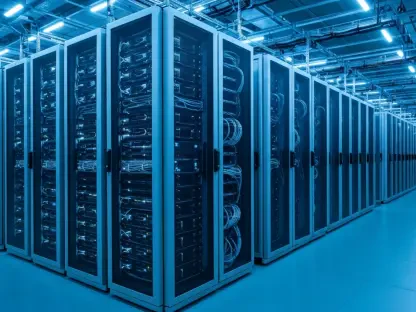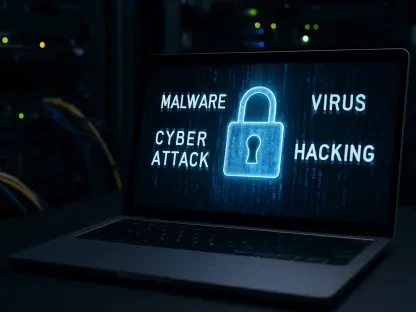Quantum networking, an intricate blend of cutting-edge technology and futuristic vision, has witnessed unparalleled advancements recently, promising to shape the future of secure communications. On both terrestrial and celestial fronts, American and European innovators are tackling the fundamental technical challenges to usher in the next era of quantum computing. By interlinking quantum chips, computers, and data centers, quantum networking aims to facilitate a scalable and powerful quantum computing infrastructure.
Distributed Quantum Computing and the Quantum Summit
One transformative application of quantum networking is distributed quantum computing, a concept vigorously explored at Cisco’s Quantum Summit. This landmark event united experts from academia, government, and industry, highlighting significant strides in the field. Inder Monga, executive director at the Energy Sciences Network, emphasized the rapid advances in distributed quantum computing and projected substantial growth in quantum networks, which could create interconnected webs of quantum computers.
The QUANT-NET research project exemplifies this progress, as it strives to establish a prototype distributed quantum network spanning 5 kilometers of fiber between Berkeley Lab and the University of California, Berkeley. Monga, serving as the lead principal investigator, anticipates groundbreaking achievements in the coming months as researchers work diligently to advance this initiative.
Quantum Key Distribution: The Cornerstone of Quantum Security
Quantum key distribution (QKD) has become the most established use case in quantum networking since its commercialization in 2003. QKD leverages secure quantum channels to exchange encryption keys, ensuring the ultra-safe transfer of data over conventional networks. American, European, and Chinese entities are actively deploying QKD networks. Several companies, including Toshiba, ID Quantique, LuxQuanta, HEQA Security, and Think Quantum, already offer QKD products.
One prominent application of QKD is seen at JPMorgan Chase, where two data centers are linked via a high-speed quantum network over fiber, with a third quantum node in place to test next-generation quantum technologies. As quantum computers approach operational maturity, the need for secure quantum networks becomes increasingly critical. Both quantum key distribution and quantum-safe encryption technologies address the potential risks to contemporary encryption standards posed by quantum computing advancements.
Regional Test Networks and Global Competitiveness
Juniper Research projects that network operators will invest over $6 billion in developing and implementing QKD networks in the next five years. Beyond QKD, large-scale quantum networks connecting multiple corporations and institutions represent the next leap forward. These expansive networks can secure all communications, not merely encryption keys.
Several regional test networks are already operational in the U.S., illustrating burgeoning interest in quantum communications. The Chicago Quantum Exchange, for example, manages an eight-node, 400-kilometer quantum network in the Chicago area. The city’s distinct seasonal temperature variations provide an ideal setting for stress testing these networks. Increased collaboration with corporate entities like JP Morgan underscores growing interest from financial firms in quantum technologies.
The U.S. and China’s Quantum Race
Despite considerable progress, the U.S. remains behind China in quantum communications. China’s extensive quantum communication network spans 12,000 kilometers, linking major cities and supplemented by two quantum communication satellites, with a third satellite scheduled for launch in 2026. The U.S. lag is partially attributed to private capital prioritizing quantum computing over networking, necessitating government and military support for large-scale projects.
Nevertheless, the U.S. is making strides. Boeing announced plans for a quantum satellite launch in 2026 to test entanglement swapping technology. Simultaneously, a quantum networking experiment aboard the International Space Station is testing quantum transmitters and receivers in the harsh environment of outer space, showcasing the U.S.’s commitment to advancing quantum technologies.
Preparing for a Quantum Future
Quantum networking, a sophisticated marriage of advanced technology and visionary concepts, has seen remarkable strides lately, poised to revolutionize the future of secure communications. Innovators in both America and Europe are diligently addressing core technical hurdles on both terrestrial and celestial plains to pave the way for a new age of quantum computing. This future-centric endeavor focuses on creating pivotal connections between quantum chips, computers, and data centers to develop an expansive and powerful quantum computing infrastructure.
Such advancements in quantum networking aren’t limited to Earth’s surface but extend towards space, making it a universally transformative technology. With rigorous research and progressive breakthroughs, the prospect of a globally interconnected quantum network is becoming a reality. This technology promises unparalleled security and efficiency, crucial for sensitive information and complex computations. As American and European scientists and engineers collaborate and innovate, the foundation is being laid for a quantum-empowered world, forever changing the landscape of digital communication and technology.









